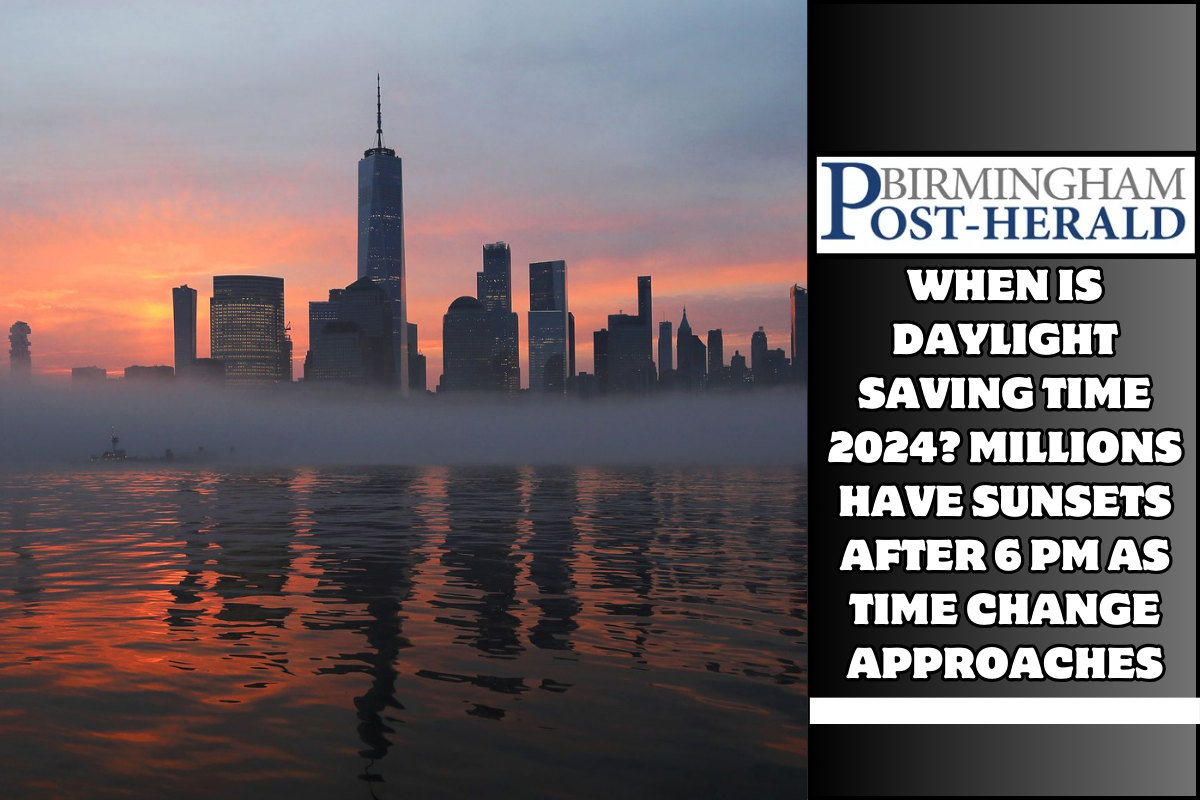When is daylight saving time 2024? Millions have sunsets after 6 pm as time change approaches:-Is it in the air? It’s getting closer to spring, and the longer days are already here.
And when spring forward in time comes in March, most Americans will be able to spend even more time in the sun. In towns across the whole of the continental United States, it is already getting dark after 6 p.m., even before the time change. This is because the Earth and the Northern Hemisphere are starting to tilt towards the sun.
When is daylight saving time 2024? Millions have sunsets after 6 pm as time change approaches
The time change affects the daily lives of hundreds of millions of Americans. It causes clocks to be adjusted, which leads to less sleep in the days that follow and, of course, later sunsets.
That time change will happen in 2024. Here’s what you need to know.
When is daylight saving time in 2024?
On Sunday, March 10, 2024, at 2 a.m. local time, daylight saving time will start. Our clocks will move forward one hour as part of the twice-yearly time change that affects most Americans.
Have the days been getting longer?
The day with the fewest bright hours every year is the winter solstice, which happens every year on December 21. The days have been slowly getting longer since then.
Cities facing east get to see the morning before cities facing west because the sun rises in the east and sets in the west.
Before daylight saving time starts this month, the sun is setting later in some places already. TimeandDate.com says that at 5:30 p.m. ET, it already gets dark in some parts of Maine, New Hampshire, Vermont, New York, and Connecticut on the East Coast.
As you move west through time zones, sunsets get later. Cities like Detroit and Indianapolis, which are on the western edge of Eastern Standard Time, see their sunsets around 6:30 p.m. ET.
The idea works the same way in all four time zones in the mainland United States. Cities on the easternmost edge of each time zone see sunset between 5:30 and 5:45 p.m. local time.
What is daylight saving time?
In the United States, most people change their clocks forward by one hour from March to November for daylight saving time.
In order to make up for more daylight in the summer nights, we lose an hour in March instead of gaining one in the autumn. It’s to make the mornings longer that we ‘fall back’ in November.
When is the spring equinox?
The beginning of the spring season is marked by the vernal equinox, also known as the spring equinox, which occurs on March 19 in the Northern Hemisphere.

Also Read:-Curfews, checkpoints, mounted patrols: Miami, Florida cities brace for spring break 2024
When does daylight saving time end in 2024?
On Sunday, November 3, 2024, at two o’clock in the morning local time, daylight saving time will be terminated for the year. The next year, on Sunday, March 9, 2025, it will begin to take up again.
Is daylight saving time ending permanently?
A plan to end changing the clocks was brought to Congress a few years ago. In 2022, the U.S. Senate passed the Sunshine Protection Act unanimously, which would make daylight saving time permanent. It did not pass in the U.S. House of Representatives, though, so President Joe Biden did not sign it into law.
A version of the act from 2023 also did not move forward in Congress.
Does every state observe daylight saving time?
Some states and U.S. regions don’t follow daylight saving time.
Except for the Navajo Nation, Hawaii and Arizona do not use daylight saving time. Neither do the U.S. regions of American Samoa, Guam, the Northern Mariana Islands, Puerto Rico, or the U.S. Virgin Islands.
Arizona doesn’t use daylight saving time because it is a desert state. The state didn’t see a reason to change the clocks to make sunset an hour later during the hottest months of the year after most of the U.S. accepted the Uniform Time Act.
The Navajo Nation, which is made up of parts of Arizona, Utah, and New Mexico, does use daylight saving time.
Hawaii is the only other state that doesn’t change its clocks to summer time. It is close to the equator, so there isn’t a lot of change in the hours of lighting throughout the year.
